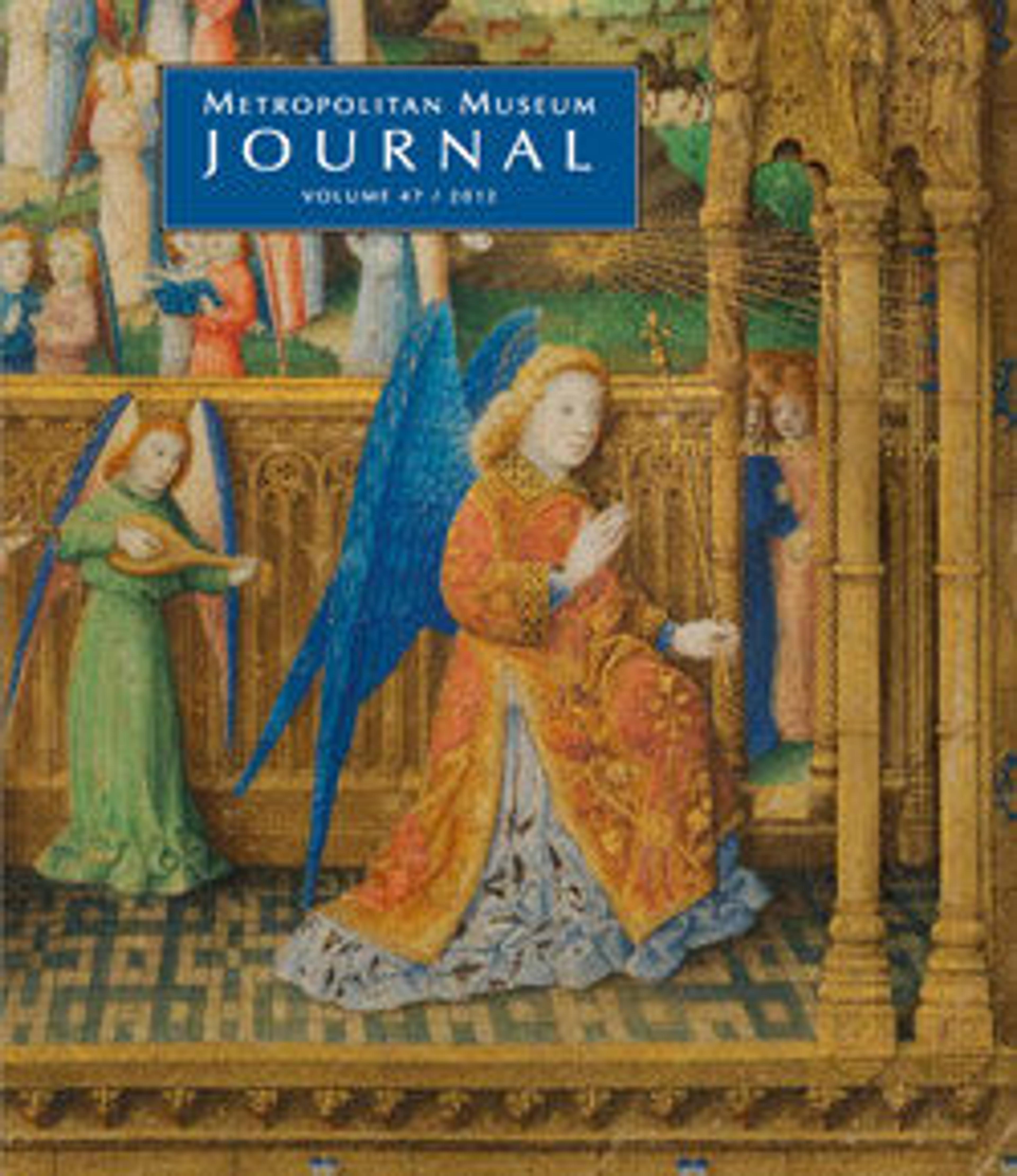Neck from a vessel depicting the goddess Hathor flanked by felines
Though fragmentary, the decoration on this gold band from the neck of a mostly missing silver vessel suggests the vessel held intoxicating drink.
The Hathor heads point to the vessel's close association with Hathor, daughter of the sun-god Re, and the flanking animals, in this case lion cubs rather than the usual cats, are a reference to Sakhmet / Bastet. All these goddesses are associated with the tale of the Distant Goddess. The Distant Goddess myth subsumes that of the Destruction of Mankind - a tale of the rampaging goddess who was only halted by intoxication. Additionally, particular festivities associated with Eye of Re goddesses seem to encourage drunkenness as a way of transcendence and association with divinity.
The Hathor heads point to the vessel's close association with Hathor, daughter of the sun-god Re, and the flanking animals, in this case lion cubs rather than the usual cats, are a reference to Sakhmet / Bastet. All these goddesses are associated with the tale of the Distant Goddess. The Distant Goddess myth subsumes that of the Destruction of Mankind - a tale of the rampaging goddess who was only halted by intoxication. Additionally, particular festivities associated with Eye of Re goddesses seem to encourage drunkenness as a way of transcendence and association with divinity.
Artwork Details
- Title: Neck from a vessel depicting the goddess Hathor flanked by felines
- Period: New Kingdom, Ramesside
- Dynasty: Dynasty 19
- Reign: Ramesses II or slightly later
- Date: ca. 1279–1213 B.C.
- Geography: From Egypt, Eastern Delta, Tell Basta (Bubastis), Temple of Bastet, ancient cache
- Medium: Silver, gold
- Dimensions: H. 8 cm (3 1/8 in.); Diam. 5.4 cm (2 1/8 in.)
- Credit Line: Theodore M. Davis Collection, Bequest of Theodore M. Davis, 1915
- Object Number: 30.8.370
- Curatorial Department: Egyptian Art
More Artwork
Research Resources
The Met provides unparalleled resources for research and welcomes an international community of students and scholars. The Met's Open Access API is where creators and researchers can connect to the The Met collection. Open Access data and public domain images are available for unrestricted commercial and noncommercial use without permission or fee.
To request images under copyright and other restrictions, please use this Image Request form.
Feedback
We continue to research and examine historical and cultural context for objects in The Met collection. If you have comments or questions about this object record, please complete and submit this form. The Museum looks forward to receiving your comments.
